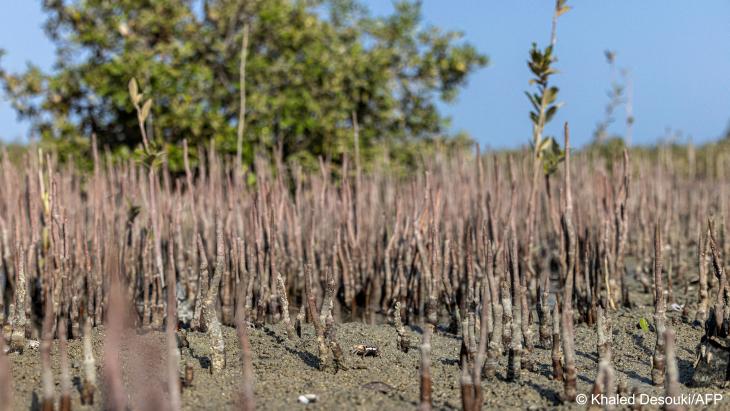With scarce rains, extreme heat waves and droughts, climate change could lead to the displacement of millions of people in the Middle East, the world’s most water-poor region, with the attendant risk of environmentally damaging urbanization and potential conflicts over resources.
Signs of climatic changes are recorded by the head of the Egyptian Peasants Syndicate, Hussein Abu Saddam, on the ground. He says: “Young people migrate from rural areas abroad or to large cities to work, and he believes that climatic factors are behind this migration.
Although Egypt mainly suffers from “its large population and being one of the most arid countries in the world”, new phenomena related to climate change such as “the emergence of new parasites” make agriculture less profitable than before, “according to Abu Saddam.
According to the United Nations High Commissioner for Refugees, “90% of refugees in the world come from areas that are highly vulnerable to the effects of climate change.”
216 million people will be displaced by 2050 in the countries of the Middle East and North Africa
Amy Pope, Deputy Director of the International Organization for Migration, explains: “If the population cannot provide its own food and cultivate the land, then there is no other way for them but displacement.”
She points out that repeated natural disasters in 2021 “pushed nearly three million people to leave their homes in Africa and the Middle East.”
“We expect the situation to deteriorate,” she says.
Florian Bonvois, a researcher at the French Center for Economic, Legal and Social Studies in Cairo, said: “There is also an attraction to the city’s lifestyle and the services available there.”
Greenpeace environmental organization warned in a new report of water and food shortages, heat waves and other serious negative effects of climate change in the Middle East and North Africa, days before the start of the Climate Conference of the Parties (COP27). By the end of the century, 80 percent of the densely populated cities in the Middle East and North Africa region are likely to experience heatwaves for at least 50 percent of the warm seasons. And with high emissions in some locations in the Middle East and the Gulf region, maximum temperatures during severe heat waves in the future could exceed 56 degrees Celsius, according to the Greenpeace report.
Unless action is taken to limit climate change, the World Bank believes that by the year 2050 there will be 216 million migrants for climate reasons, as entire families will be forced to flee within their countries, and displacement will include 19.3 million in the five North African countries.
This region is more vulnerable than others because its beaches are densely populated and threatened by rising sea levels. 7% of its population lives at an altitude of less than five meters from sea level, according to the European Foundation for the Mediterranean.
By default, citizens head to major cities such as Cairo, Algiers, Tunis, Tripoli, the Rabat-Casablanca axis and Tangiers.
However, the World Bank warns that these “climate migration hotspots” are also vulnerable to rising sea levels.
Analysis: The Middle East is on the cusp of an energy revolution amid ‘unprecedented’ climate change
In Alexandria, for example, on the Egyptian Mediterranean coast, two million people will have to move to another place, about a third of the city’s population, and the city will lose 214,000 jobs if the sea level rises 50 centimeters.
Climate change exacerbates conflicts in the countries of the Middle East
Economist Asim Abu Hatab warns that gatherings like this “increase pressure on resources,” which “may lead to violent conflicts,” as he put it, in an area where 22 percent of the population depends on agriculture.
In Sudan, conflicts between tribes over water, pastures and lands have claimed hundreds of lives since the beginning of this year in several states.
According to UNICEF, 11 of the 17 most water-poor countries in the world are located in the Middle East and North Africa region.
In Iraq, for example, if no action is taken by 2050, and “if the temperature rises by 1 degree Celsius and the rainfall decreases by 10%, this country of 42 million people will lose 20% of its fresh water,” according to the World Bank.
As for Jordan, one of the driest countries in the world, it was forced to double its water imports from Israel this year, while the Gaza Strip, which is under Israeli blockade, has been suffering from chronic water shortages for years.
Pop says that the international community pledged at the Copenhagen and Paris climate conferences to “help developing countries face the repercussions of climate change” by contributing to providing these countries with “a different way of agriculture and better water management.”
In early September, I urged 24 African countries to honor these commitments as soon as possible.
It will renew this call during the Conference of the Parties on Climate (COP 27), which begins on the sixth of November in Egypt.
Pope stresses that “alternative sources of employment and income” must be found to curb climate migration












